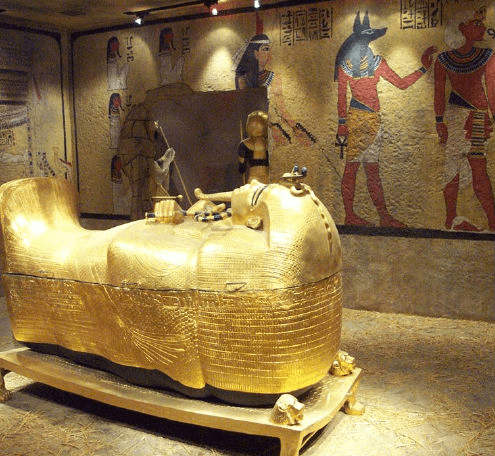Discovering Tut : The Saga Continues Class 11 English Hornbill
Discovering Tut : The Saga continues by A.R. Williams
A critical summary :
This chapter is meant to show readers the beauty and mystery of ancient Egyptian culture and the science and wonder of archaeology. This chapter is actually a part of the book which goes with the same title as mentioned above and it has many chapters, rather than a short story; in fact, the book is an in-depth look at the circumstances of King Tut's death, as well as the general culture and lifestyle practiced during his lifetime. Fascinating and well-written this book has captured many people's interest, and it remains a popular choice for anyone interested in archaeology and ancient Egyptian culture.This is a living example of technology advancement. We accepted things and events attributing their cause to nature and her wrath. However, advancement and technology could give us a different picture. This way, it has become a habit with us to accept everything that history states and dictates. On the process the modern world has found ways to offer a different view on it. In other words, the modern world has turn impossibilities to possibilities.William’s report gives an insight into this.
A mummy scanned after a thousand years has opened new avenues regarding a cause of its death. The mummy referred to here is that of King Tut or Tutankhamen, meaning the living image of Amun. The earlier ruler, Amenhotep-IV has shocked the country by attacking Amun, a major God, smashing his images and closing all his temples. His family had ruled for centuries before the boy king, Tut took over. However, Tut ruled for nine years and then died both mysteriously and unexpectedly. The scanning of Tut’s mummy also gave an insight as to how mummies were buried. Howard Carter, who scanned the body found it difficult to extract the mummy. The ritual resins had hardened thereby cementing Tut to the bottom of his solid gold coffin. Carter finally had to chisel the mummy away having no other option. Every major point was severed.

Tut was buried with gold which was meant to guarantee the resurrection and was also buried with every day things he would need in his after-life. Tut also had things to take on his journey to the great beyond-glittering goods, precious collars, necklaces and sandals, all of pure gold. The computed Tomography scan couldn’t solve the mysterious death of Tut but gave us clues for sure.
The X-rays and C.T.scan reveal a startling fact-the breast bone and the Pont ribs of Tut were missing. Such a revelation would not have been possible without technological precision. This fact gives us a clue that Tut, in all likelihood did not die a natural death. Technology hasn’t been able to give us a definite answer to Tut’s death.However, it has given us a direction to think and proceed. Maybe in future, technology would solve it for us. The whole excavation and the scan required scores of people. It was a gruelling job and the workers had a tough time. After the pharaoh was rested in peace again, Zahi Hawass, Secretary General of Egypt’s Supreme Council of Antiquities said, “I didn’t sleep last night, not for a second. I was worried. But now I think I will go and sleep.” It just proves how tough the whole process was. In other words, King Tut is one of the first mummies to be scanned-in death as in life. He was famous when he was alive and his untimely death has raised the necessity to probe the lingering mysteries of this young ruler who died more than 3,300 years ago.
|
15 videos|231 docs|46 tests
|
FAQs on Discovering Tut : The Saga Continues Class 11 English Hornbill
| 1. What is the article "Discovering Tut: The Saga Continues" about? |  |
| 2. What was the significance of the discovery of Tutankhamun's tomb? |  |
| 3. What are some of the challenges faced in preserving the artifacts found in Tutankhamun's tomb? |  |
| 4. How is modern technology being used to study the artifacts found in Tutankhamun's tomb? |  |
| 5. What can we learn from the artifacts found in Tutankhamun's tomb? |  |

|
Explore Courses for Class 11 exam
|

|


















